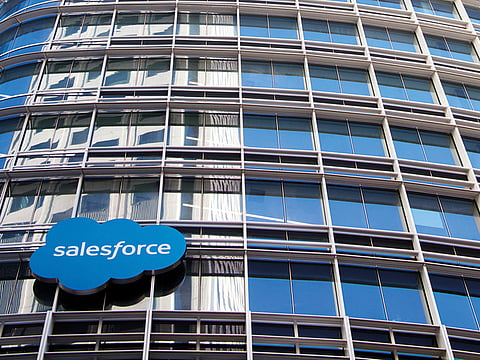San Francisco gets back its tall tower bearings
After extended dry spell for verticals, Salesforce Tower represents a return to form

San Francisco: The skyscraper came late to the city, a shipping and manufacturing hub for much of its existence. The wealthy roosted on the hills, and the masses toiled on the flats and the docks. Everyone lived close to the ground in a setting renowned for its natural beauty.
Now the things being shipped are virtual, and vast amounts of office space are needed to design, build and market them. Salesforce, a company that did not exist 20 years ago, will take up residence on January 8 in the new Salesforce Tower, which at 1,070 feet is the tallest office building west of the Mississippi.
In Silicon Valley, the office parks blend into the landscape. They might have made their workers exceedingly rich, they might have changed the world — whether for better or worse is currently up for debate — but there is nothing about them that says: We are a big deal.
Skyscrapers tell a different story. They are the pyramids of our civilisation, permanent monuments of our existence. They show who is in charge and what they think about themselves. Salesforce Tower is breaking a San Francisco height record that stood for nearly half a century.
“A ceiling has been breached,” said Alison Isenberg, a professor of urban history at Princeton University. “Now the discussion becomes, “Is this just a building that is taller than the ones we already had” or does it raise new questions about the nature of the city?”
Salesforce Tower is visible from just about everywhere. Go to the farthest edges of the city, and its 61 storeys of tapered steel and glass stick up like a forceful thumb. On the drive north from the airport, the tower is the one building discernible over Potrero Hill.
From the distant North Bay, it is the first thing you notice as San Francisco sheds its customary morning fog. The building catches the morning sun, dazzling the way none of its lesser neighbours do.
The tower is not beautiful, but is impossible to ignore. The top floors are set off from the rest, and the crown is flat rather than a spire. It looks as if a rocket were stowed up there, an escape vehicle for the tech overlords when the city is consumed by disaster.
It will have to be a big rocket, because there are so many overlords. While few were looking, tech ate San Francisco. There are now 79,129 high-tech jobs in the city, about triple the number a decade ago, according to a new research report from the real estate firm CBRE.
If you work in an office in the city, there is a 28 per cent chance you work in tech. That level is exceeded only by Seattle, where the sharp growth of Amazon pushed the percentage of tech workers up to 38 per cent, and by Silicon Valley itself, where it is 42 per cent.
“San Francisco has gone from being driven by multitudes of industries in 2007 to being now focused largely on tech,” said Colin Yasukochi, a CBRE analyst. “The growth feeds on itself. Tech workers are attracted to the great opportunities in the city, and the supply of workers means more tech companies come here.”
The website for Salesforce Tower makes a point of noting the other tech companies nearby — Yelp, Amazon, eBay, Intuit. Meanwhile, non-tech companies are slimming down and looking elsewhere. Charles Schwab, the financial services firm founded in San Francisco in 1971, just built a 5,000-employee campus in Texas.
Within Salesforce Tower’s shadow, a more slender, 802-foot building is also just coming to completion. It will house thousands of Facebook employees; there are condos for sale as well. The penthouse is available for a reported $42 million, offering a well-heeled mogul the chance to make a splashy statement.
San Francisco has always been like this. There were so few skyscrapers in the city’s first century that the ones that were built tell a tale of rampant egos and unrestrained power. At the end of the 19th century, the city’s newspapers had hubris and wealth to rival today’s internet companies.
In 1890, the owner of the ‘San Francisco Chronicle’, M.H. de Young, erected a 10-storey building worthy of his publication. It was the tallest building on the West Coast.
That irked the new owners of ‘The Call’ newspaper, the Spreckels family, who in 1895 commissioned a tower of their own mere feet from the Chronicle building. It would be more than half again as tall — 18 storeys — and would be, they promised, “the finest building ever erected for a newspaper office”. It had a 60-foot terra cotta Baroque dome, four corner cupolas and spectacular flourishes.
If Salesforce executives ever get too full of themselves, they can seek out the Call building.
In 1938, the dome was removed, and the remains were stripped of all architectural splendour. The building — whose high-tech tenants include a venture capitalist and a DNA sequencing start-up — is getting a facelift, but its past glory is gone for good.
As for The Call itself, the paper disappeared many decades ago, leaving no trace.
New York Times News Service
Sign up for the Daily Briefing
Get the latest news and updates straight to your inbox


